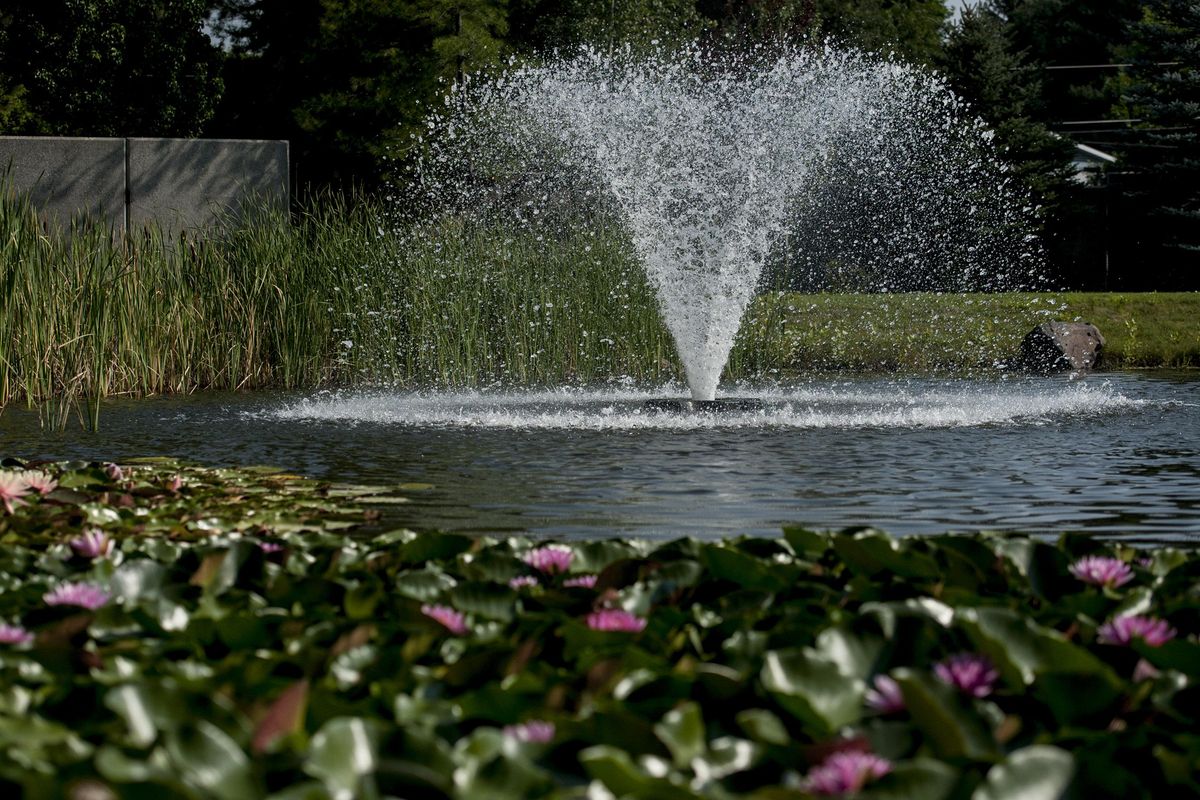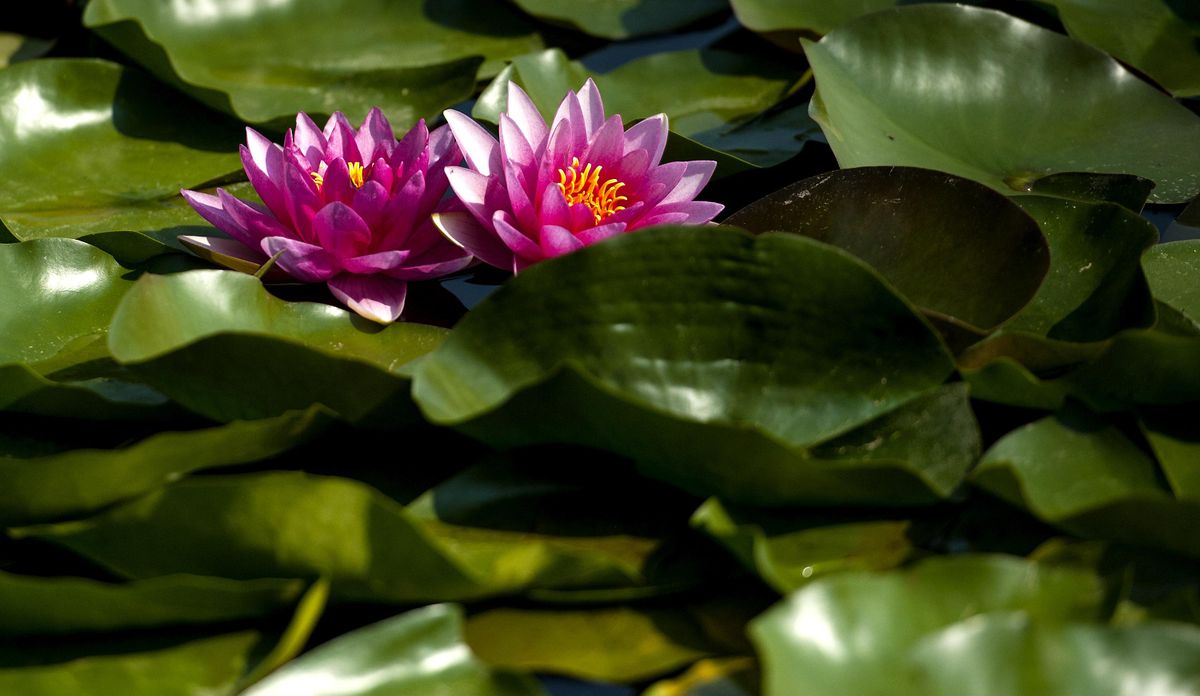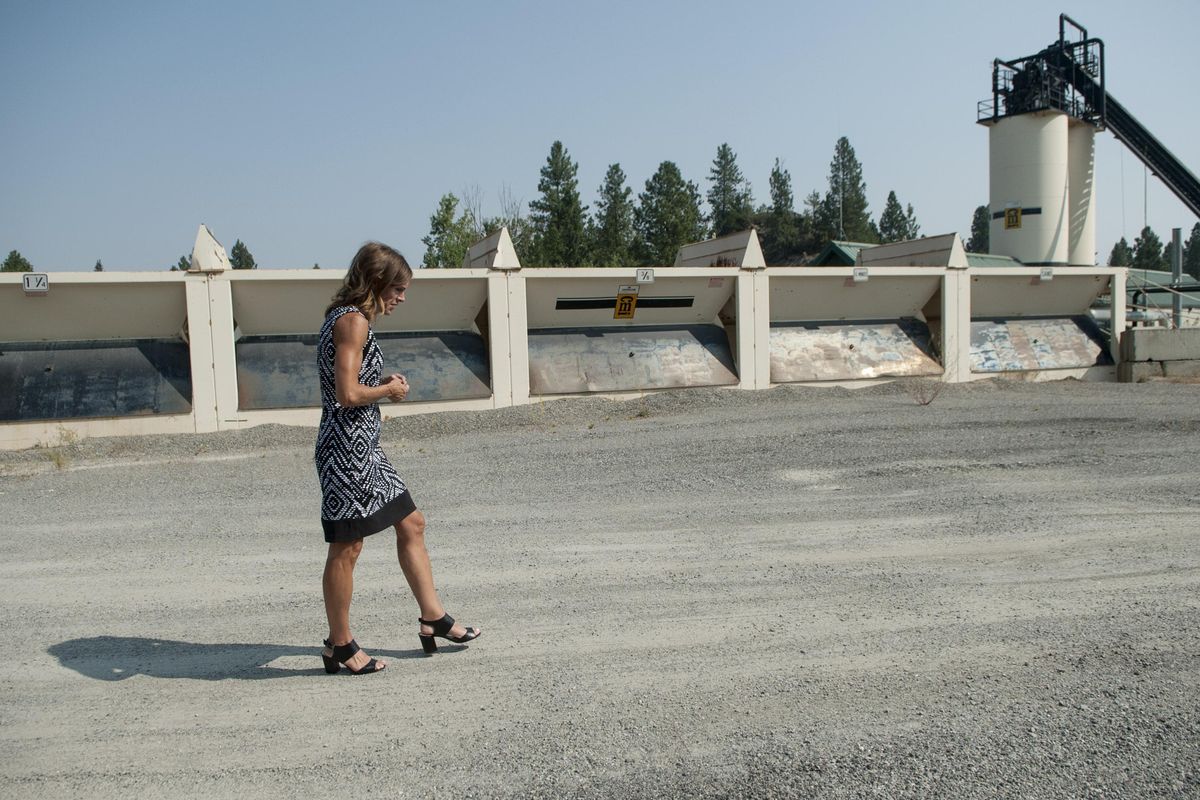Spokane County Conservation District pays $1.2 million for unused quarry in Spokane Valley
Water lilies in full bloom at the former Spokane Rock Products headquarters as seen Thursday, Aug. 3, 2017. The Spokane Conservation District has purchased the former gravel quarry and plans to transform it into a sprawling public park. (Kathy Plonka / The Spokesman-Review)Buy a print of this photo
The Spokane Conservation District plans to transform a defunct gravel quarry on the lower South Hill into a sprawling public park with walking trails, a tree nursery and other natural attractions.
The conservation district – a public agency that works with landowners to preserve natural resources – recently purchased the nearly 50-acre site at Eighth Avenue and Havana Street for more than $1.22 million.
Spokane Rock Products Inc. began producing asphalt at the site in 2002 after the county commissioners pulled out of a rezoning battle. Neighbors on all sides of the once-abandoned mine complained about the sounds of heavy machinery and the smell of volatile gases that escaped from the asphalt mixing facility.
In 2014, Spokane Rock Products struck a deal with a competitor, Central Pre-Mix Concrete Co., which moved the asphalt operation to Airway Heights and left the property vacant for more than two years.
Vicki Carter, the director of the conservation district, said Spokane Valley city officials considered rezoning the site for high-density housing. But in December, she said, she noticed a for-sale sign while driving past the property and thought it would be a prime spot to move the district’s headquarters.
The district’s five-member governing board unanimously approved the purchase in May after two public meetings attended by a few dozen neighbors.
“We don’t need more houses here,” Carter said. “We need people to understand and appreciate this natural beauty.”
The conservation district is funded through a mix of public and private grants, state appropriations and property taxes assessed through Spokane County. Its operating budget last year totaled about $1.77 million.
Carter said the purchase of the old mine would not directly affect the operating budget because the money was taken from Washington’s Local Government Investment Pool, which is managed by the state treasurer’s office.
Carter said the transaction eliminated the need to secure a loan and pay additional interest.
“It was definitely a good use of funds,” she said.
Central Pre-Mix stopped listening to other potential buyers after beginning talks with the conservation district, said K.C. Klosterman, a spokesman for Oldcastle Materials Inc., the American arm of a multinational conglomerate that owns Central Pre-Mix.
Klosterman said Oldcastle, which deals in asphalt, concrete and other building materials, wanted the site to be “transitioned to its secondary life” rather than sold to a competitor.
Several neighbors said they were excited about the proposed natural area.
“We were thrilled with the fact that it won’t be housing,” said Arlette Popiel, who lives on South Lloyd Street, a cul-de-sac overlooking the rock pit. “That forest behind my house, I don’t want that to go away.”
Carter said wildlife already abounds on the property, which features steep basalt cliffs, several wooded sections and a man-made pond blanketed with water lilies. She hopes the site will become a haven for birds, deer and other critters similar to the Dishman Hills Natural Area in Spokane Valley.
“As we continue our urban expansion, places like this are becoming fewer and fewer,” she said. “Not every kid has the ability to go outside of their neighborhood and see stuff like this.”
The property also includes a small parking lot off Eighth Avenue and a two-story, 7,000-square-foot office building that served as Spokane Rock Products’ local headquarters. Carter said the foundation of that building sank recently and the ground floor was rebuilt; the interior remains unfinished.
There’s also more than 7,000 tons of leftover asphalt and large piles of crumbled concrete pavement that will need to be cleaned up, Carter said. For now, workers are doing basic grounds maintenance, which is “relatively low-cost,” she said.
Asphalt production is known to release hazardous pollutants, including arsenic, cadmium, benzene and formaldehyde. Recent tests of two wells on the property found high levels of iron and nitrates in the groundwater, but other pollutants weren’t detected or were found at levels considered safe enough for drinking.
“It’s nothing that we feel is of public concern,” Carter said.
She said the property “catches a lot of water” and slows runoff from the South Hill, which has been affected by recent development. Some pits on the property still had standing water in July, she said.
Carl Durkoop, one of the neighbors who opposed plans for the asphalt operation in the early 2000s, said he looks forward to watching the conservation district’s work.
“For the broader neighborhood, I really can’t think of a better outcome,” he said.




